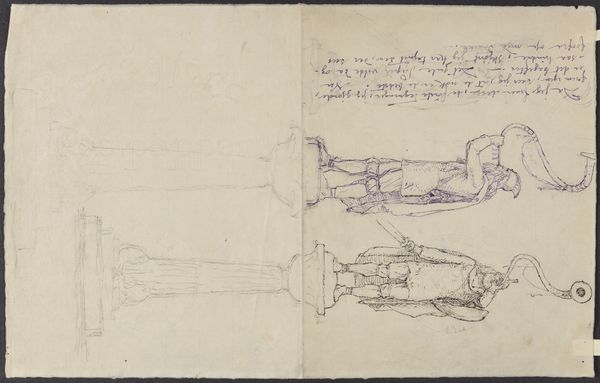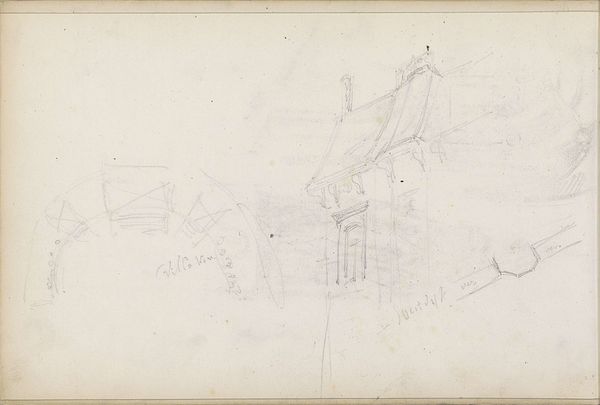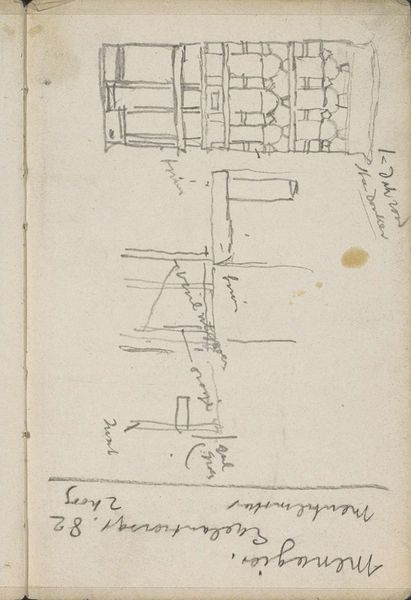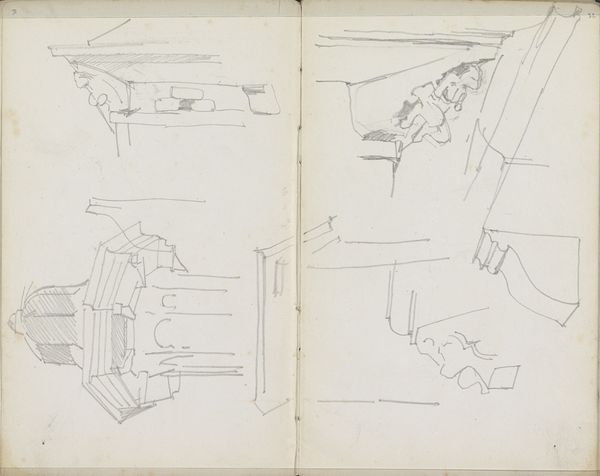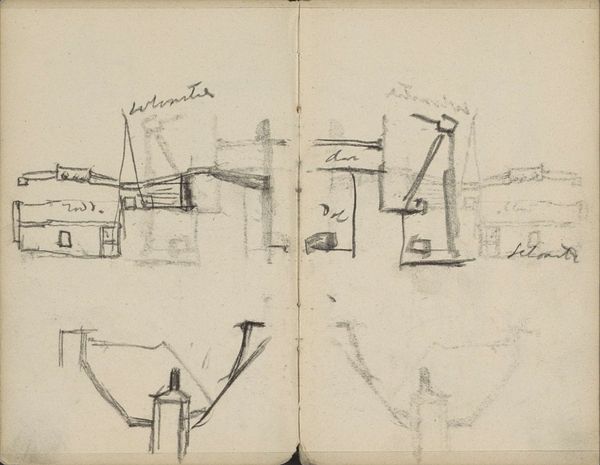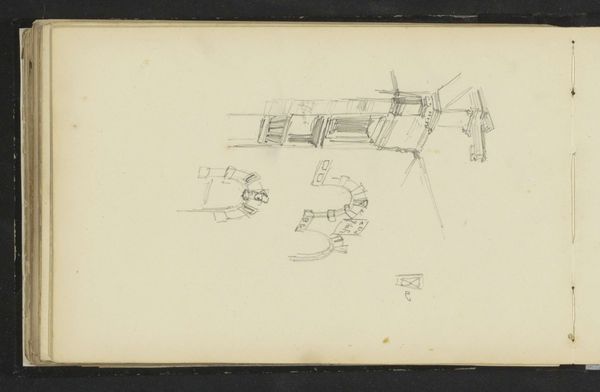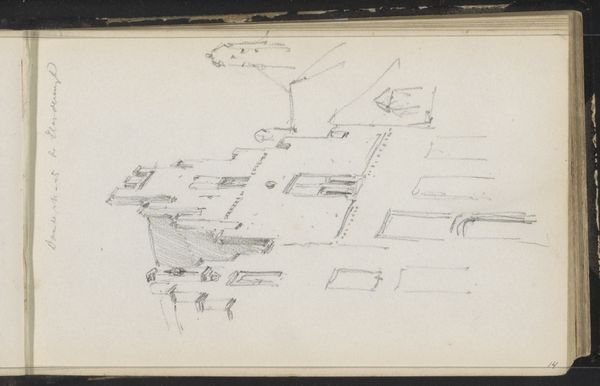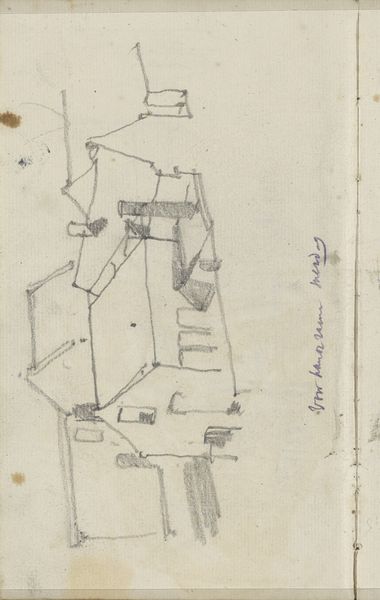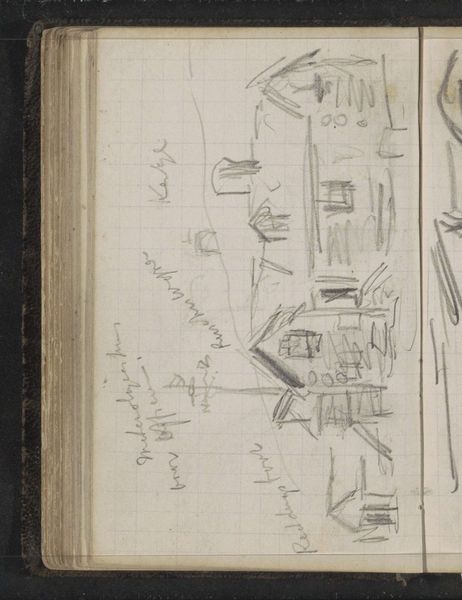
Dimensions: height 217 mm, width 277 mm
Copyright: Rijks Museum: Open Domain
Editor: Here we have "Gezichten te Amsterdam," or "Views of Amsterdam," a pen drawing by George Hendrik Breitner, created between 1886 and 1923. It has the feel of a sketchbook, with rapid, almost frantic lines. What strikes me is its immediacy, a snapshot of daily life. How do you interpret this work? Curator: This sketchbook page offers a fascinating glimpse into Breitner's process, doesn't it? But beyond the “snapshot,” consider what it reveals about the rapidly changing urban landscape of Amsterdam and Breitner’s engagement with it. The impressionistic style, capturing fleeting moments, also reflects a deeper anxiety about modernity and the alienation it produced. Think about the figures; they’re present, but somewhat anonymous. Editor: I see what you mean about alienation. I was just focusing on it being impressionistic. Do you think he intended to convey a social message with this sense of anonymity? Curator: I believe so. Breitner was deeply concerned with capturing the lives of ordinary people in Amsterdam, especially the working class. While his work might appear observational, it can also be seen as a commentary on social inequalities and the human cost of progress. This "snapshot" becomes a lens through which we can view a specific moment of social transformation, and that impacts who has the ability to participate in a world rapidly changing. Editor: That's a great point! Seeing it as a commentary on social inequality changes how I understand the hurried, sketchy nature of the work. I now realize he’s documenting a specific segment of society and not trying to depict “Amsterdam” as a monolith. Curator: Exactly! This opens up discussions about the very act of representation itself and who has the power to represent whom. What stories are told, and whose stories remain untold? It’s a crucial element of art-historical study to consider these questions. Editor: I definitely have a richer understanding of this piece now. Thank you for bringing up the crucial context. Curator: My pleasure. Every artwork is situated in this kind of network; discovering its connections transforms our understanding of art, history, and ourselves.
Comments
No comments
Be the first to comment and join the conversation on the ultimate creative platform.
